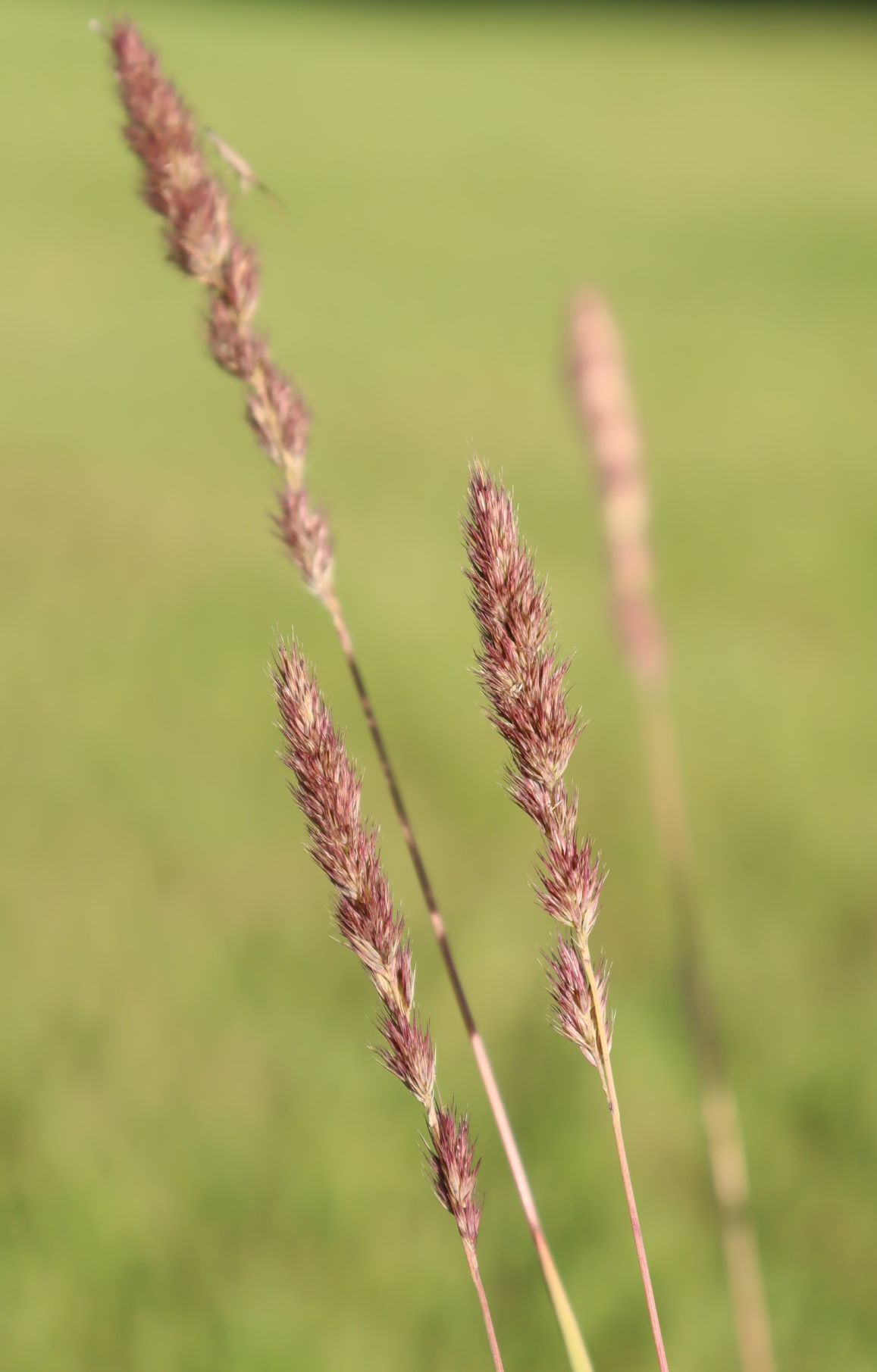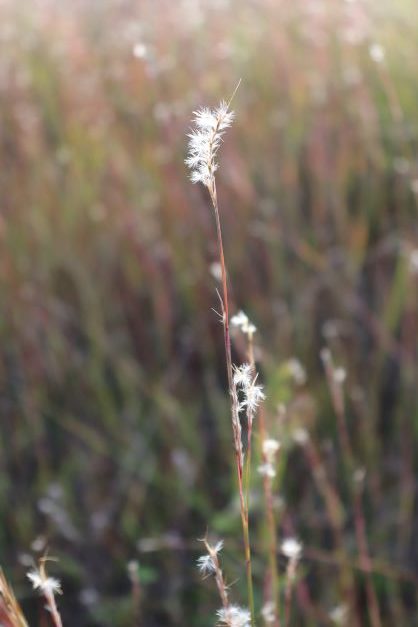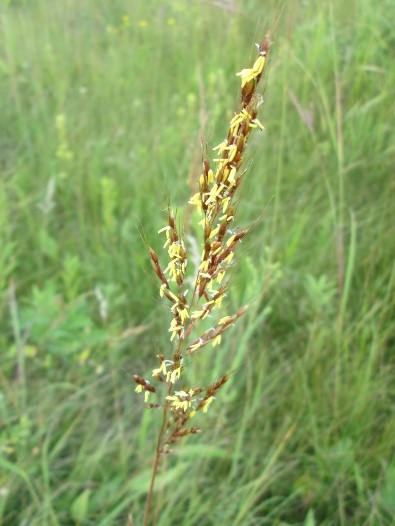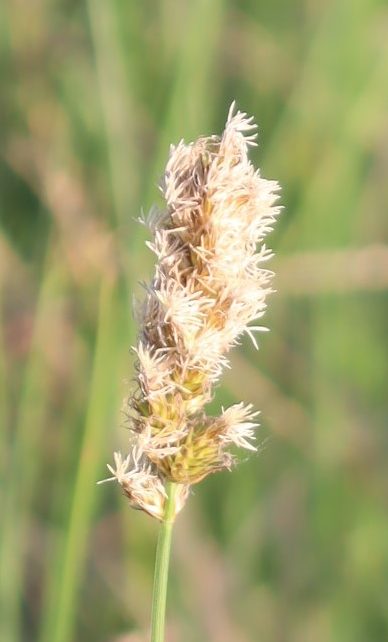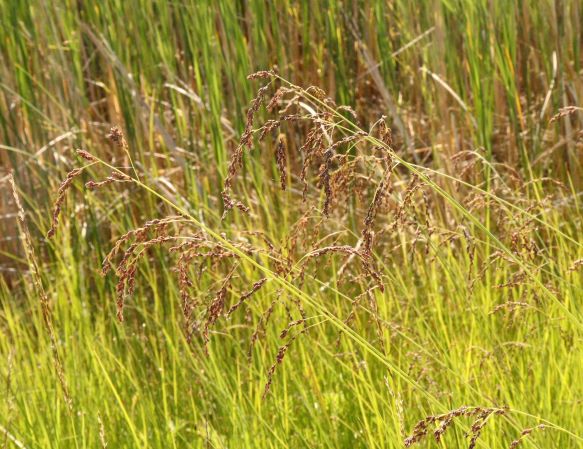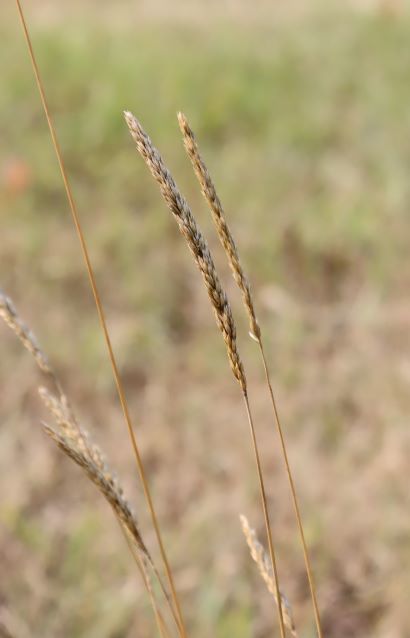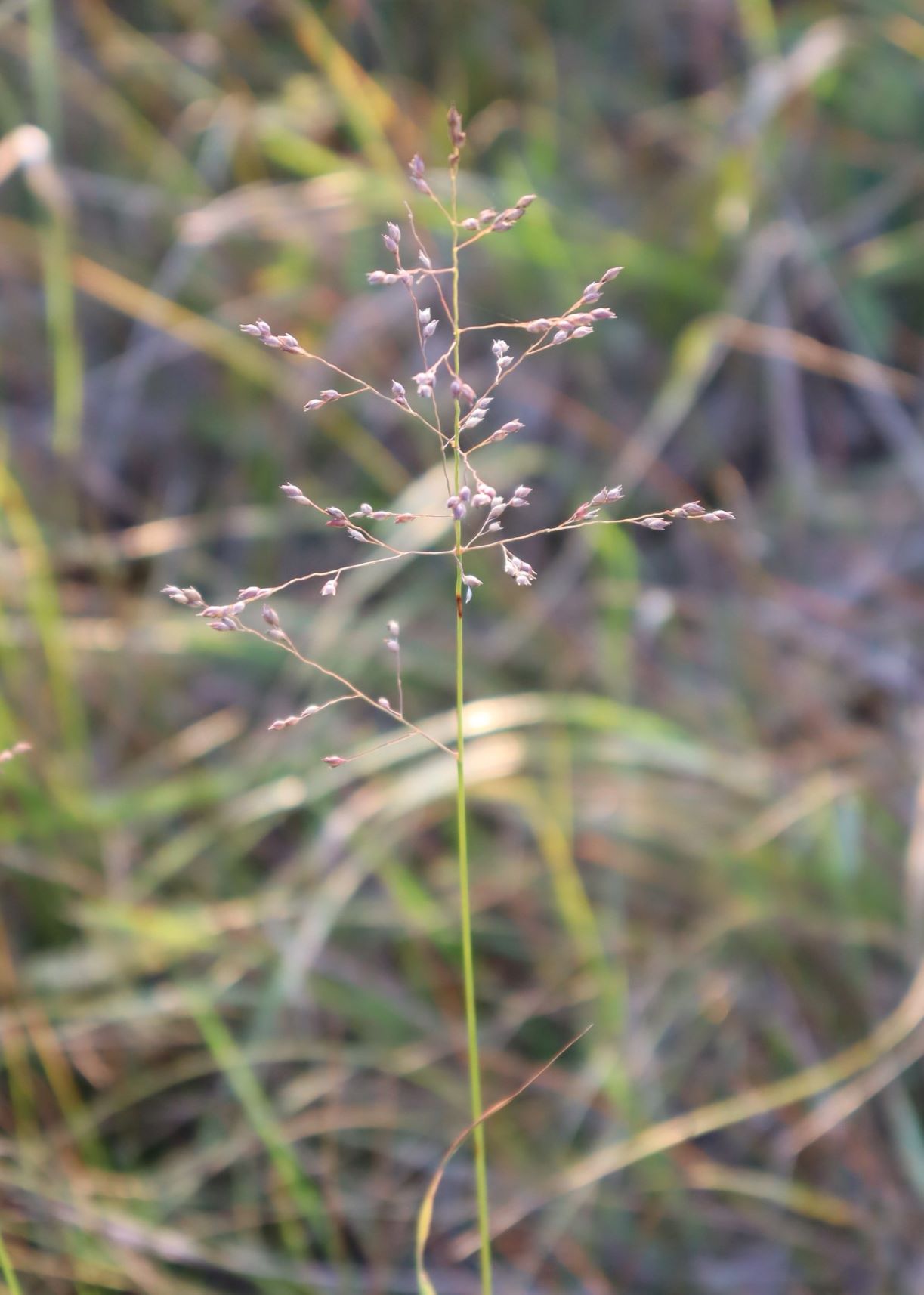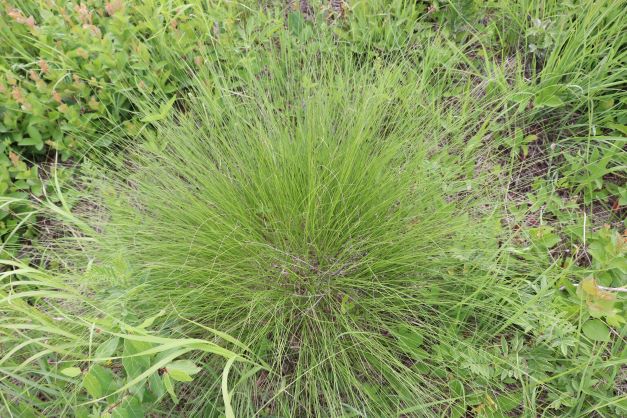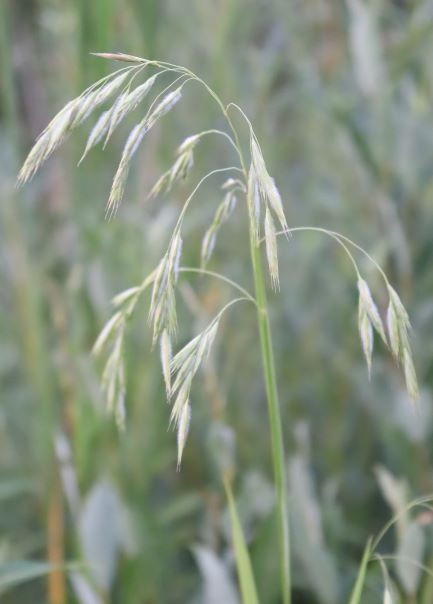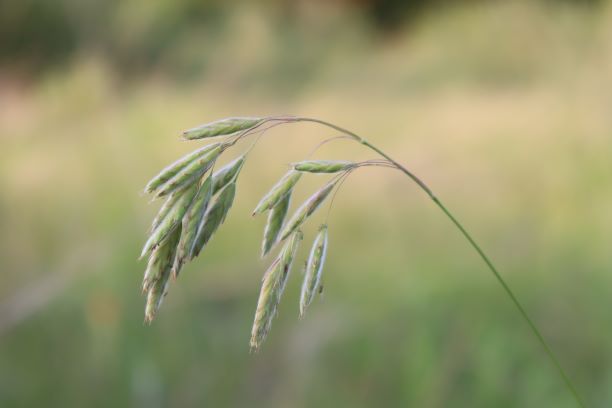As one might suspect, graminoids (grass-like species) are the dominant vegetation type in tall, mixed and short grass prairie habitats. Though dominant in terms of cover, the diversity of grass species is much lower than forb (wildflower) species. By way of example, the Manitoba Tall Grass Prairie Preserve in southeastern Manitoba has approximately 27 grasses and well over 300 forbs.
Grasses comprise 25 - 100% of the vegetation cover in dry prairies and 75 - 100% of the cover in medium to moist prairies. Forbs, on the other hand, comprise only 5 - 50% cover in any prairie type.
Little bluestem
Reddish stalks and feathery seed heads are the attractive features of this bunch grass.
Sorghastrum Grass
The stalks alternate between green and a gorgeous reddish brown. The copper-coloured seed heads are covered in silky hairs.
Sartwell’s Sedge
Gold to brown flowering stems stand out above the surrounding wetland vegetation.
Fowl manna grass
A taller grass with seed heads that are green to burgundy with white stripes.
June Grass
When flowering, the narrow, densely-flowered spikes open up and are very showy.
Switch Grass
Stiff, erect stature and beautiful, pyramid-shaped panicles give it an air of confidence and endurance,
Fringed Brome
Open, pendulous seed heads are soft and fuzzy. The lower leaves and leaf sheaths are also softly hairy.
Porcupine Grass
Of all the native prairie grasses, it is probably the most fascinating in terms of seed dispersal and germination.
Blue Grama Grass
My favourite dry prairie grass! This warm-season bunchgrass has very curly leaves.


